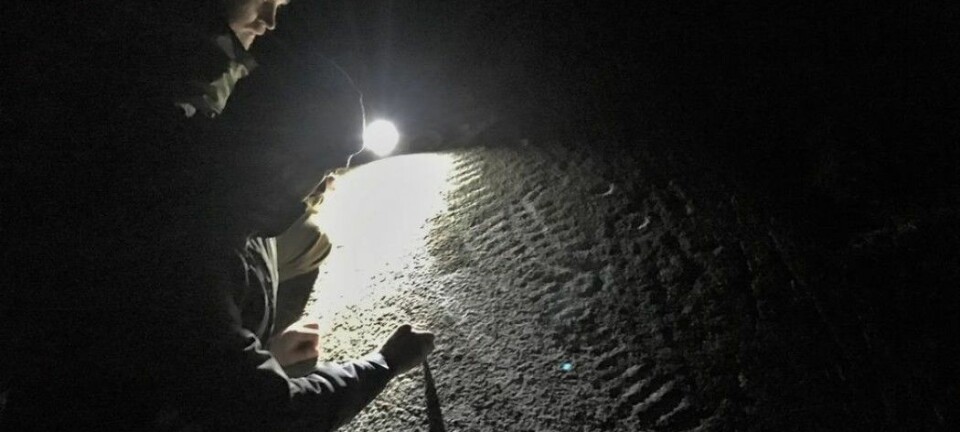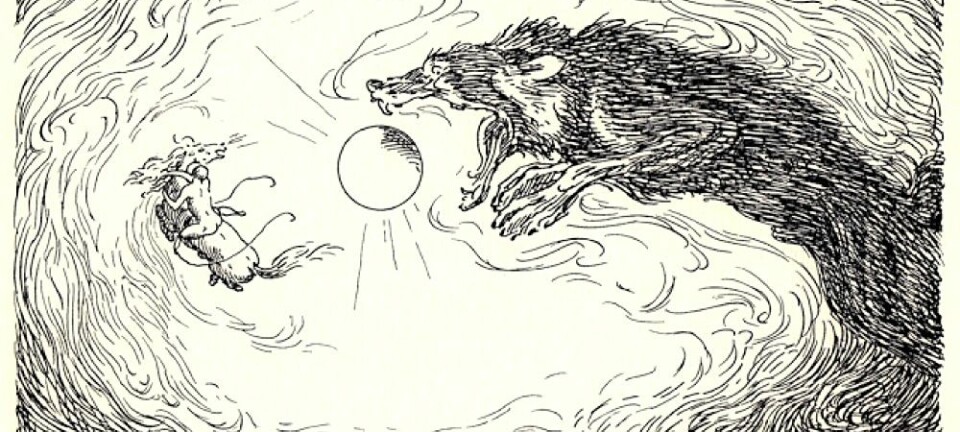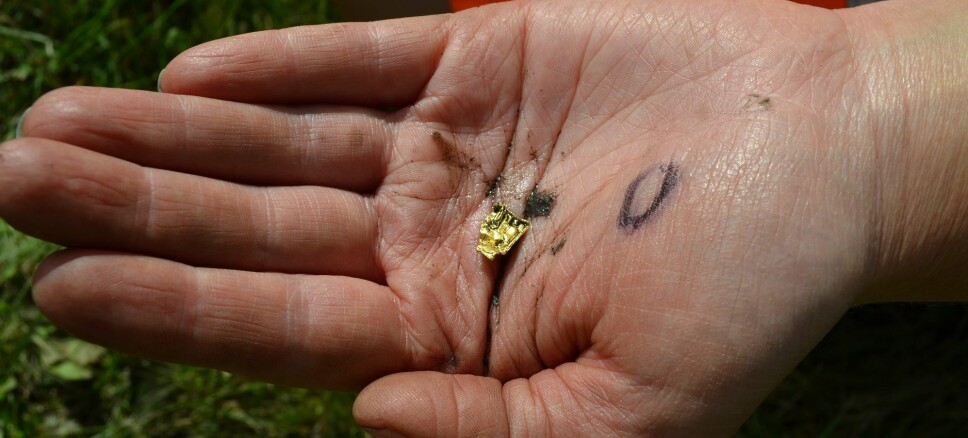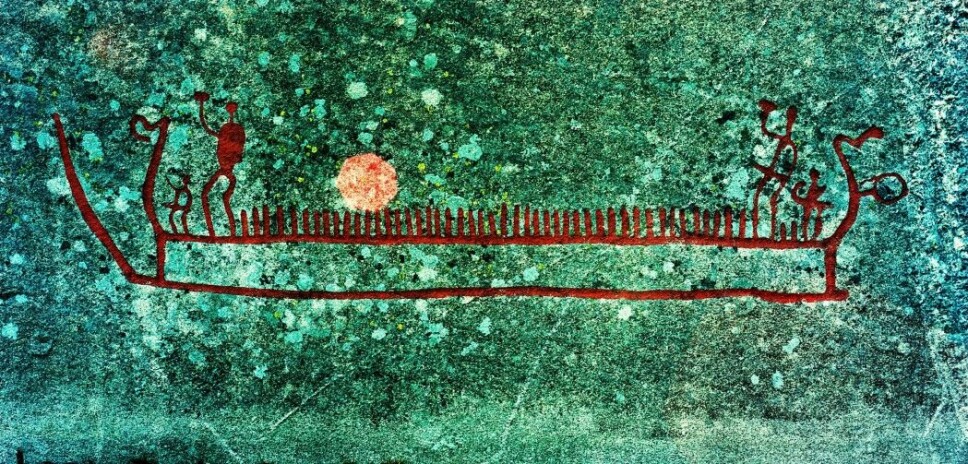
Was there a Viking Age in Norway — 2000 years before the Vikings?
It may be that people from the North went to the Mediterranean with "Viking ships" as early as 3000 years ago.
In recent years, archaeologists who study Norway during the Bronze Age have discovered a great deal of new information. Some now have a completely different perspective on this period. Colleagues in Sweden and Denmark feel the same way.
They see evidence of a first Viking Age.
The thing is, it happened three thousand years ago. What we now call the Viking Age actually dates from just a thousand years ago.
Big ships
People who lived in Norway 3000 years ago were far less primitive than many have imagined. They were not hunters who still lived a Stone Age kind of life.
The ships built by Norwegians, Swedes and Danes during the Bronze Age may have had a crew of over 50 men. People from Scandinavia went to England in ships like these. They probably made their way down the great rivers in Europe.
They may have used the ships to travel to Finnmark in northern Norway.
And perhaps to Italy in the south.
People were linked to the sea
As many as 90 per cent of all Bronze Age petroglyphs (rock carvings) in Norway feature ships, both large and small. They have now begun to attract the attention of archaeologists.
Why were people in Norway 3000 years ago so focused on ships?
When Norwegians learn about the many petroglyphs found in their country during history class in school, the teacher and textbook probably describe them as mythological images of ships, transporting passengers into the realm of death. Essentially, they were thought to be some kind of religious images.
But would it be too unbelievable if the ships were real?
People in Norway, Sweden and Denmark during the Bronze Age travelled far and wide. They were mobile people.
They travelled all the way to Spain and Italy.
Some may have travelled all the way to Greece and to the Pharaohs of Egypt. This can't be ruled out, at least.
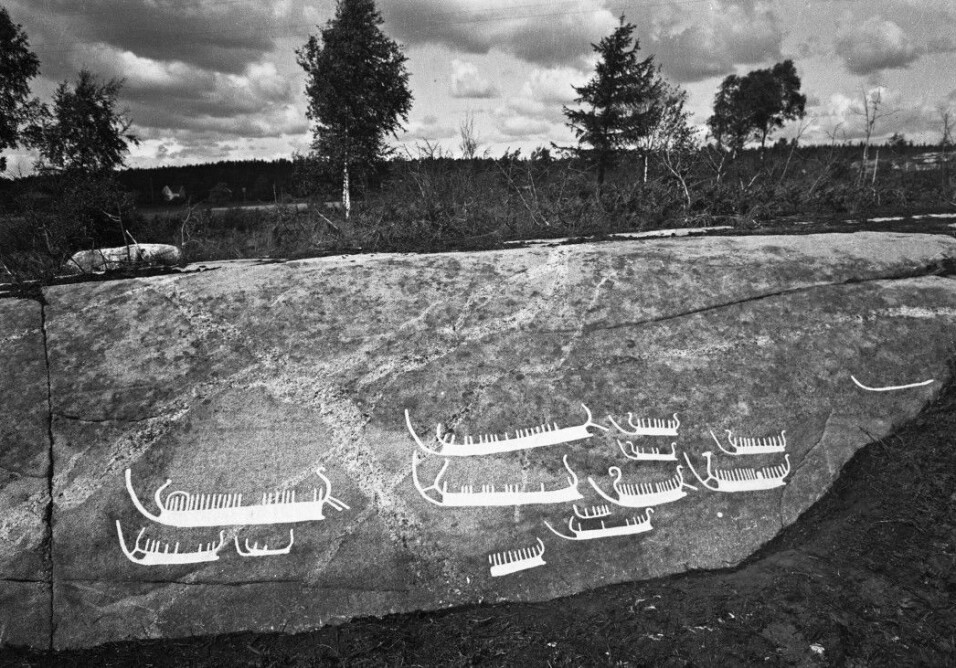
The world was globalized 3000 years ago
“The world was globalized for the first time during the Bronze Age,” says Kristian Kristiansen.
Kristiansen is a researcher at Gothenburg University and is regarded by his colleagues as the Grand Old Man of Bronze Age research in Scandinavia. Kristiansen is thrilled to be in a field where researchers in recent years have come up with a lot of new, very exciting knowledge.
“The people who lived in Scandinavia about three thousand years ago were clearly part of the globalization movement of the time,” he says.
Archaeologist Lene Melheim at the University of Oslo’s Museum of Cultural History is a key figure in Norway’s Bronze Age research community.
“I think it’s likely that more than 3,000 years ago, Norwegians travelled by ship all the way to the Mediterranean,” Melheim says to sciencenorway.no.
“Some of my colleagues would disagree with me on this. But I think it's very likely. We know that Norwegians had goods from southern Europe, and that they were probably strong seafarers. That means it is as likely that they travelled the world, as if middlemen came to Norway with all of these foreign goods,” she says.

Both the Bronze and Viking Ages were maritime societies
Consequently, the Bronze Age may have been a very special time in Norway and for its neighbouring countries, Denmark and Sweden.
Generally, the Bronze Age is considered to have been around 3700 years ago, and lasted until 2500 years ago, or more than 1000 years. In contrast, the Viking Age lasted only a few hundred years, from around 800 - 1050 AD.
Today archaeologists know that ships, houses, weapons, clothing and many other things from long ago look very much like similar objects from the Viking Age. People primarily used bronze and gold when they needed metal. The Vikings also used iron.
Shipping, trade, animals and farms, violence and looting, the construction of large burial mounds, and large-scale sacrifices involving jewellery and weapons — all these from the Bronze Age, 3000 years ago, are surprisingly similar to what we think of as the Viking Age. At least that is the picture that archaeologists are now starting to put together.
“Bronze Age and Viking Age societies in the Nordic countries were very similar,” Kristiansen says. The most striking resemblance was that both were maritime societies.
An amusing fact is that the first Norwegian researchers who took an interest in the ships found in petroglyphs thought that Vikings must have carved these images.
Because the ships looked like Viking ships.
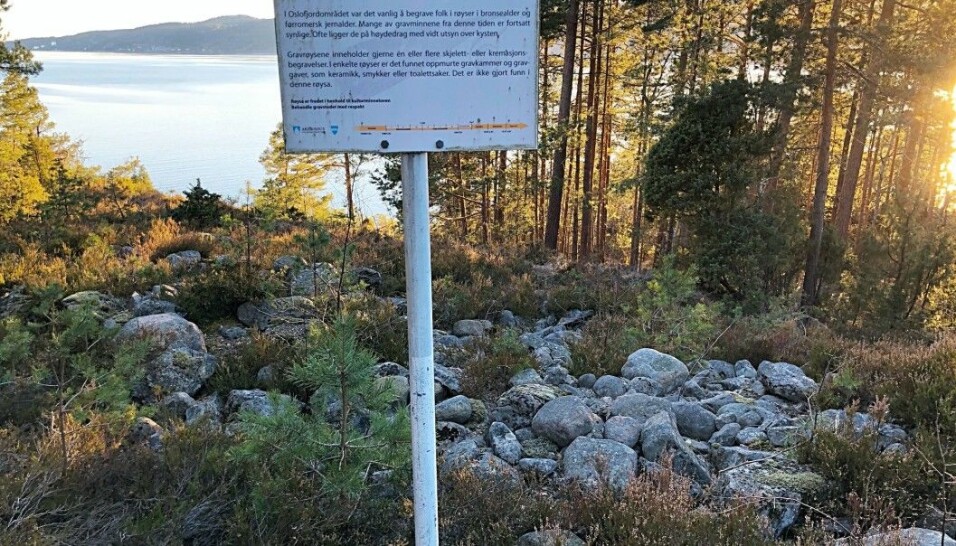
Ships with 50 crew members
Many Bronze Age petroglyphs of ships also have lines that show how many crew members were aboard. They are depicted on most of the ships, Melheim says.
She is fairly confident that each of these lines represents a human being.
Nordic ships during the Bronze Age were neither rowed nor sailed. They were paddled with long paddles.
The lines on the petroglyphs show us the number of paddlers on board each ship. But it may be that every line represents two paddlers, Melheim says, since people sat in pairs side by side and paddled.
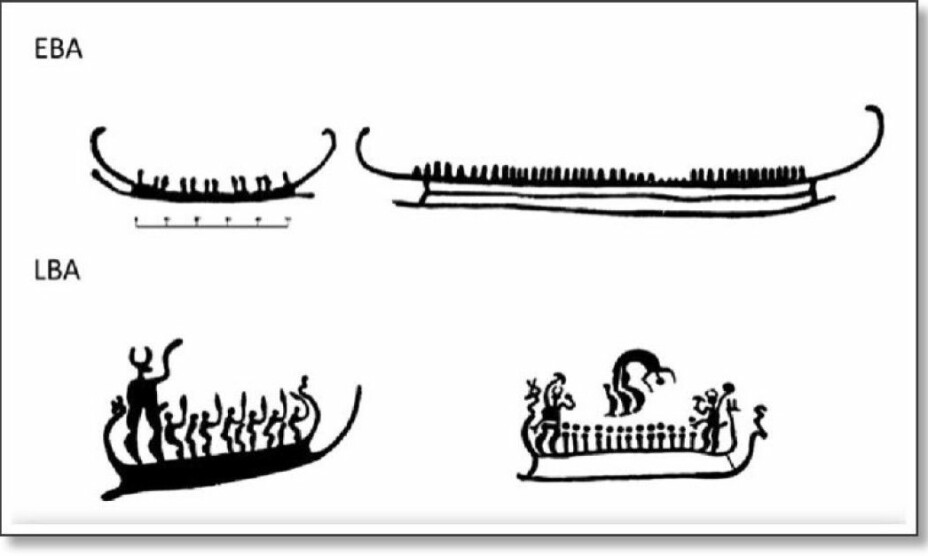
Vessels built with planks
Consequently, people in Norway travelled in more than just hollowed-out tree trunks 3000 years ago, even though these vessels were also found in the Bronze Age.
These boats were built from planks, we now know.
The Bronze Age vessels were thus built using the same main principle as the Viking ships and wooden vessels from modern times.
This construction meant that boats and larger ships that embarked along the coast from Finnmark, Nordland, Trøndelag, Western Norway, Rogaland and Southern Norway, and around the Oslo Fjord, were light, responsive vessels.
Bronze Age vessels were paddled. The oldest evidence in Norway for boats that were rowed is found in northern Norway from the first part of the Iron Age, a few hundred years later. People did not start using sails in Norway until the Viking Age, in the 700s.
How big was the crew of a Bronze Age ship?
Johan Ling is a Bronze Age archaeologist at the University of Gothenburg.
In Bohuslän, on the northernmost part of Sweden’s west coast, researchers have recorded no fewer than 10,000 vessels depicted on petroglyphs. Ling has examined around 1700 of them.
When a petroglyph shows a ship with a 3big crew, that doesn’t necessarily mean it represents a real ship with such a large crew. However, Ling says that much of what is depicted on petroglyphs — ploughs, axes, swords, lures, wagons and a number of animals that are recognizable from today — all represent real things that did exist in Sweden and Norway 3000 years ago.
So is it reasonable to assume that the big ships we see are just mythological fantasy images?
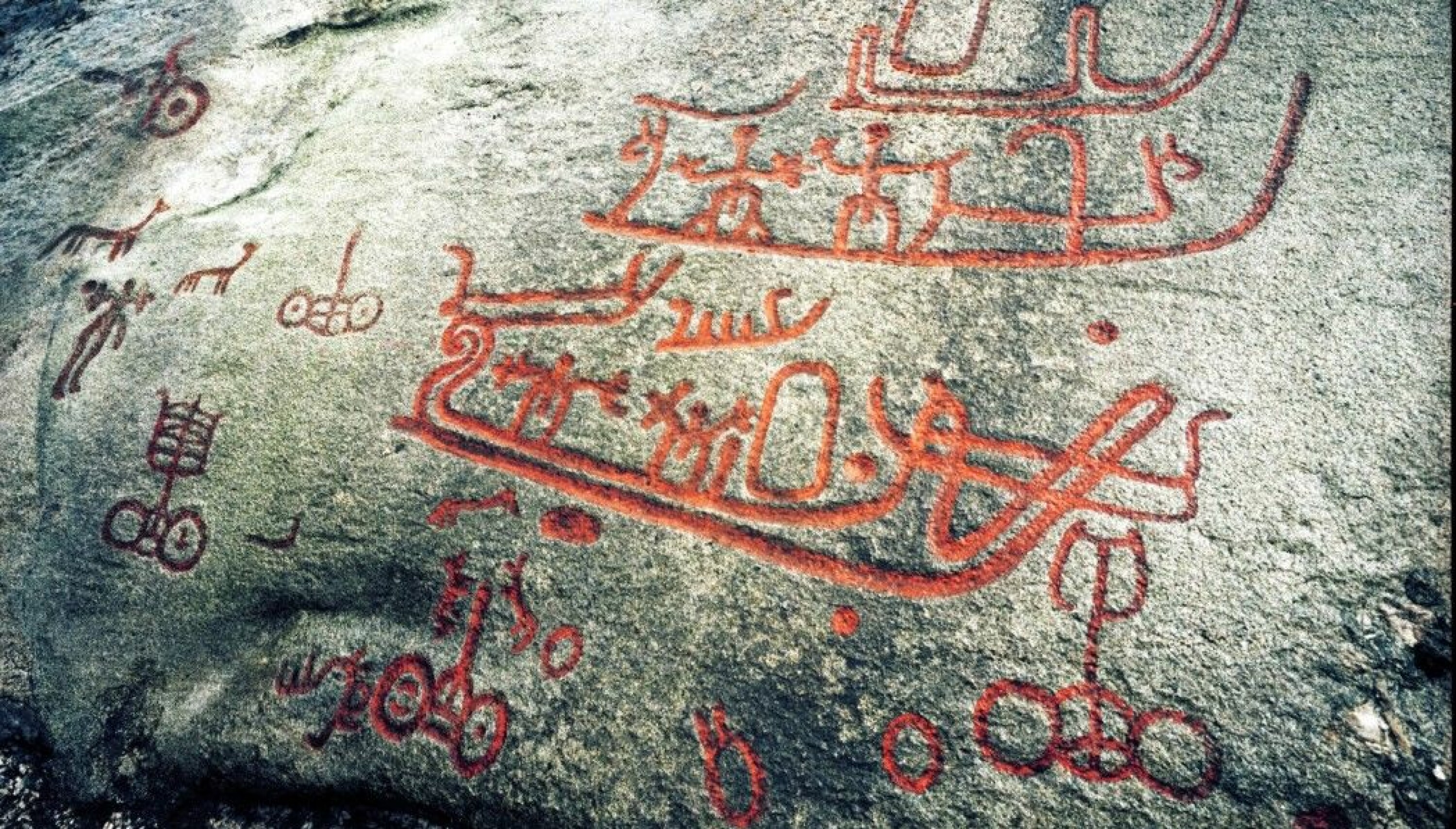
Ling has also compared many images of vessels in petroglyphs and found that most commonly, each ship has between 6 and 13 lines representing crew. Assuming the lines represent pairs, then the ships would have been crewed with 12 to 26 paddlers.
But there are also far larger ships depicted in other petroglyphs.
The lines tell us that the largest ships — such as the Bjørnstad ship in the picture at the top of this article — may have had a crew of more than 50 people. The largest ships in Norway and the Nordic region may have had 60-70 crew, based on petroglyphs. Some depict twice as many crew as others.
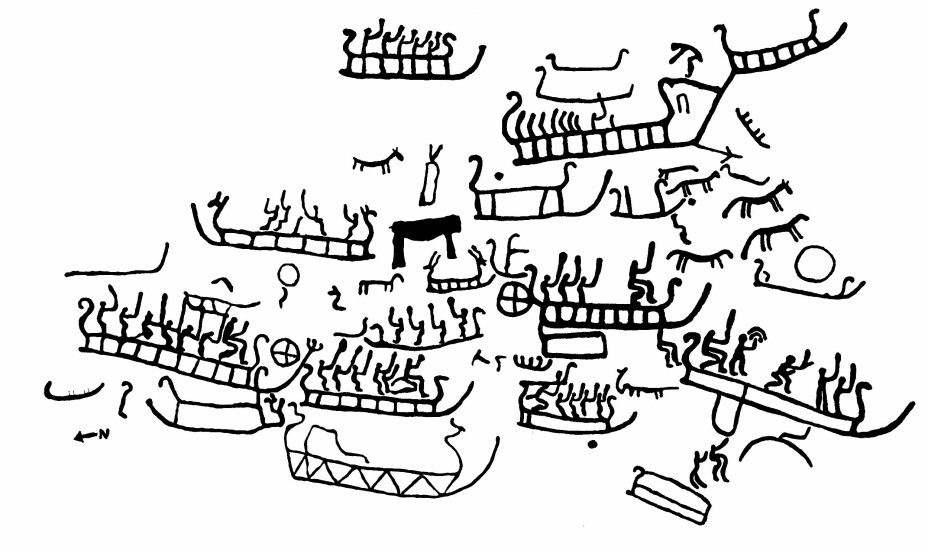
The oldest ships are the largest
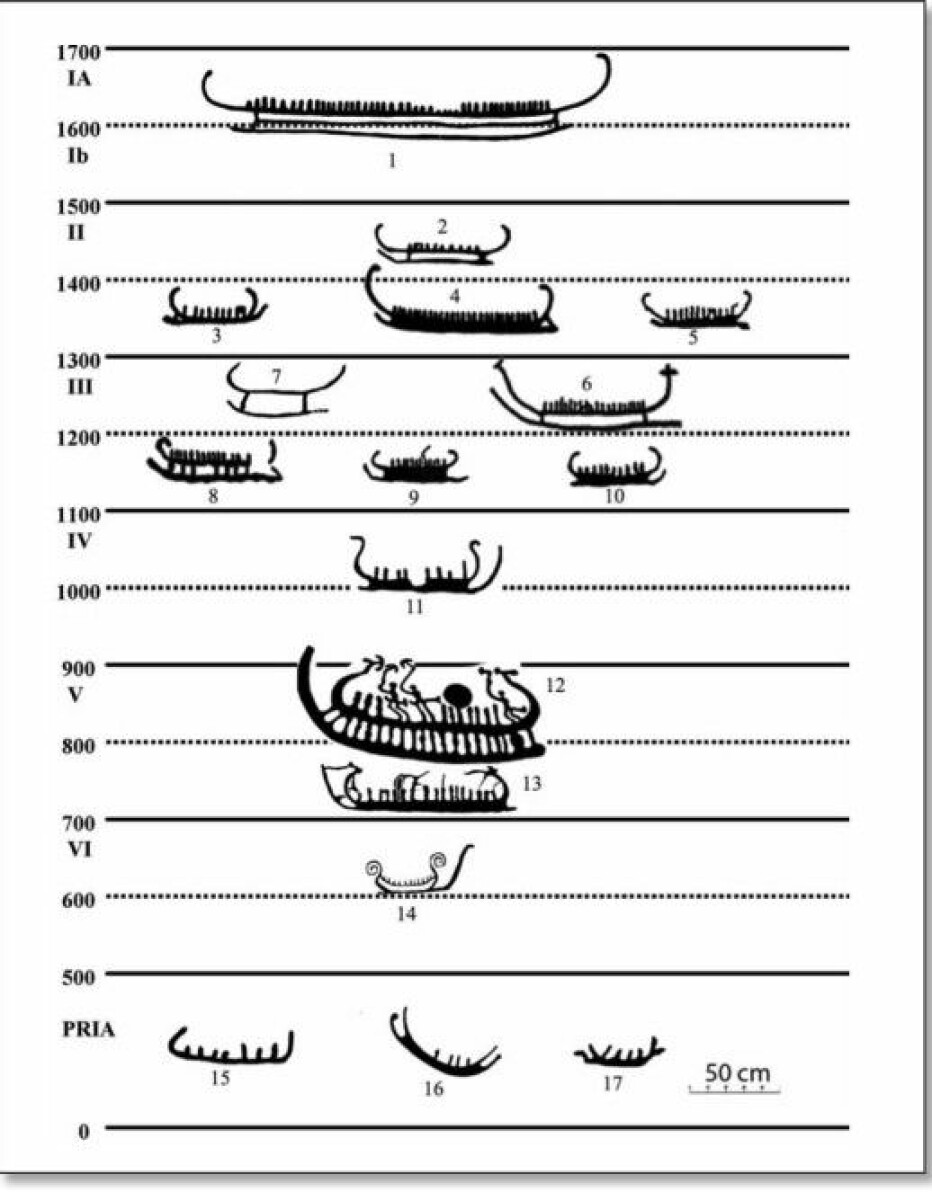
One fascinating fact is that some of the largest ships in petroglyphs in Norway and Sweden date from the oldest part of the Bronze Age.
As the Bronze Age drew to a close, there are fewer crew members on the ships. From the Iron Age to Roman times, the crews become even smaller.
Ling has also found that images from the recent Bronze Age clearly show people in conflict more often than images from the older Bronze Age. A comparison of ships from different centuries, as seen in the figure, shows warriors with axes and swords in an image that probably dates from the century between 2800 and 2900 years ago.
Does that mean there were lots of wars at this time?
Ling interprets pictures from the newer part of the Bronze Age as showing greater social differences between people aboard the ships. Some are large and are clearly strongmen, while others are small and anonymous.
Earlier in the Bronze Age, the figures on board were much more similar to each other.
Ling also points out that there were often warriors depicted around ships from the latter part of the Bronze Age. These images also show people playing the lur, a long horn with no finger holes, and acrobats doing somersaults in the air.
There are also Bronze Age petroglyphs that show people fishing from boats, but only a few.
The shape of the ships is something that remains largely consistent throughout. The template for what a ship should look like during the Bronze Age seems fairly well established.
One recent discovery Ling made when he systematized the images of the 1700 images of ships was that towards the end of the Bronze Age the distinctive bow and stern more often took the form of something resembling the animal heads of Viking ships.

A real boat dating almost from the Bronze Age
The Danish Hjortspring boat is almost 2,500 years old.
It was excavated in 1921 from a wetland and is very similar to the vessels that are depicted in petroglyphs. The Hjortspring boat is the only example known from the Nordic region of a fairly complete vessel that dates almost from the Bronze Age.
The Hjortspring boat was found with weapons and equipment for many soldiers. Therefore, it’s safe to conclude that it was a warship.
The Hjortspring boat had room for ten paddlers on each side and the vessel had a steering oar at each end. Thus, the vessel probably had a crew of 22 men.

Lightweight and nimble
This was a light vessel where most of the strength lies in the frame. The wooden planks on either side are laid over each other and sewn together. Thwarts give the vessel stability.
It’s clear that the Hjortspring boat derived from a long boatbuilding tradition dating from considerably earlier than 2,500 years ago. Some of the construction methods can be seen in Norwegian boatbuilding right up to today.
The boat was paddled with long and narrow canoe-style oars. A copy of the boat reached a speed of 8 knots.
There are no similar discoveries in Norway of large preserved vessels from the Bronze Age.
But in the Norwegian northern counties of Troms and Nordland, archaeologists have found paddle oars that are between 3000 and 4500 years old. These paddles are no different from today's canoe paddles. If they were long enough, they may have worked well for long trips in light vessels along the coast of northern Norway, says archaeologist Stephen Wickler, from the Arctic University Museum of Norway in Tromsø.
Bronze Age paddles similar to those from northern Norway have been found in southern Scandinavia, Germany and the Baltic States. This shows that people from far northern Norway had contacts on the European continent.
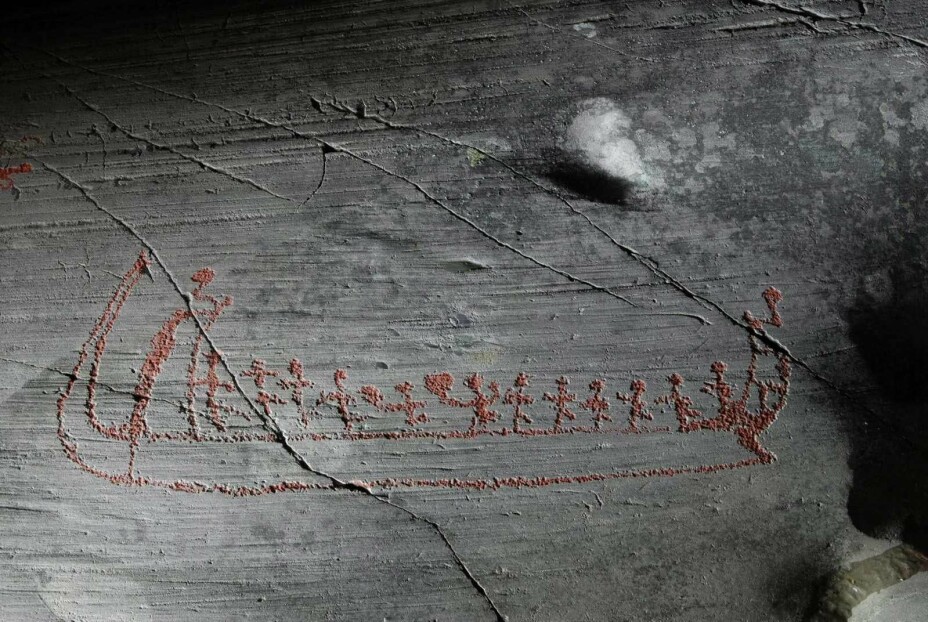
Big longhouses from Bronze Age
In recent years, Norwegian archaeologists have become much better at digging up Bronze Age settlements.
Just a few decades ago, some archaeologists believed that Norway’s Bronze Age inhabitants must have been nomads, since they found little evidence of them.
Now we know that houses in Norway from as long as 4000 years ago looked a lot like the longhouses that were built right up to the Viking era 1000 years ago.
Older Bronze Age houses could be as much as 40 metres long and were at least twice as long as their width. They were divided into two or three sections. When Norwegian archaeologists first started looking for these very old houses, they began to find them. But much work remains to be done here, if Bronze Age archaeologists find funding to continue their work.
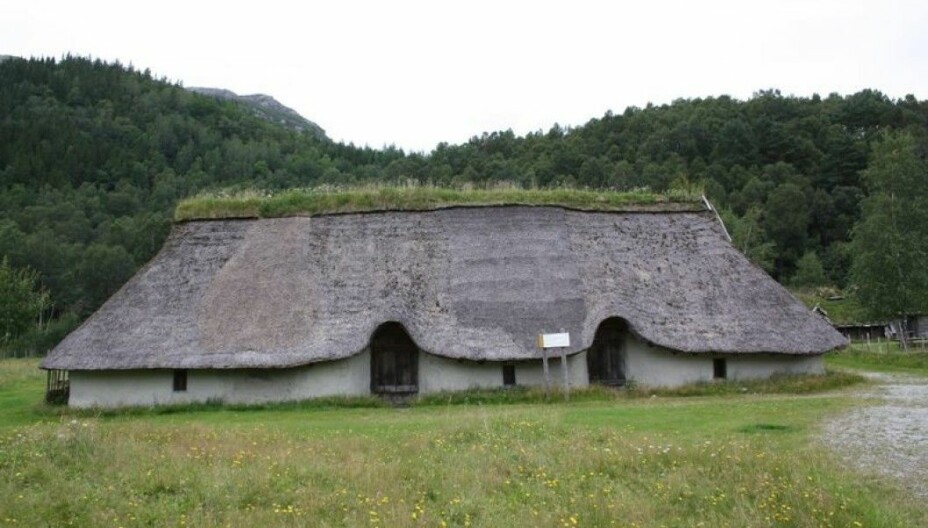
The farm
Archaeologists now know that farms with a courtyard, fields and outlying lands existed in Norway as early as the Stone Age, 4000 years ago, long before the Viking Age.
The animals on the farm in the Bronze Age were largely the same as the Vikings had and which we have today. People kept cows, sheep, goats, pigs and horses. There might have been a dog running around the yard.
A reconstruction of a small Norwegian Bronze Age village has been built in Forsand in Rogaland County. Archaeologists found an entire village here, with a number of houses from the Bronze Age and older Iron Age.
Bronze came from Europe
When bronze was invented in the Middle East or in southeastern Europe over 4,000 years ago, it made life easier for people. Bronze made it much easier to make advanced, solid weapons. The tools people used also got better.
The jewellery was also much nicer.
“People became very dependent on metals for the first time during the Bronze Age,” Kristiansen says.
But the copper and tin that were used to make bronze were only mined a few places in Europe. The sources for the materials were often in completely different places on the continent.
“This is why an extensive distribution network became necessary,” Kristiansen says.
This also helps explain why people of the Bronze Age became so dependent on ships. And they certainly had room for more than just bronze, which people could trade with.
Maybe people were also a commodity. Or something you swapped.
What DNA tells us about the dead
It’s now possible to study the genetic material — the DNA — from people who died 3000 years ago. Among other information, people’s DNA contains information about how long and far people moved during the Bronze Age.
A number of women who have been identified in Bronze Age communities in Denmark had come from far away, while men more often came from the local community.
No one knows why this is so. But what is likely is that women must have played an important role in bringing knowledge and traditions across long distances in Europe.
Helle Vandkilde is a well-known Danish Bronze Age researcher who has made important contributions to our understanding of the period.
A few years ago, Vandkilde proposed the concept of ‘bronzization’ to explain what happened during that time. The idea is similar to today's concept of globalization. It suggests that bronze required the creation of new networks and new social systems, because the metal is created from two other metals, copper and tin, which rarely occur together.
The fact that the two components of bronze had to be sourced from completely different places meant that trade accelerated.

Is the new research correct?
Kristian Kristiansen from Gothenburg University says that all of this new information has led to a great deal of discussion among Bronze Age experts.
The fundamental question is whether the information from all this new research accurately reflects what life was like for the people who lived in northern Europe three thousand years ago.
In the past, Bronze Age researchers placed a great deal of emphasis on the local community, where people lived. They conducted digs and searched for artefacts where people lived, without thinking so much about their relationship to the rest of the world.
The most important finds were considered to be valuable items, weapons and jewellery.
Now the research has shifted to focus more on the people themselves and how they lived.
In recent years, researchers such as Kristiansen, Melheim, Vandkilde and others have focused on new scientific methods which create an image of a very mobile Bronze Age society with contacts over long distances.

New scientific methods
“New scientific methods have revolutionized our field of research,” says Kristiansen. “Now we know, for example, where the copper in the objects we have found really comes from. We know it was transported over long distances.”
Researchers can now measure trace elements in the copper which helps tell them where the metal has come from. Along with lead isotopes in the copper, the trace elements can tell us what kind of ore it was and how old the copper is.
Together, this creates a kind of fingerprint that reveals the age and place of origin of the metal.
“DNA and the chemical markers we find in dead Bronze Age people are equally exciting,” Kristiansen said. “This information tells us that people at that time often travelled far, especially the women.”
Unfortunately, there are currently no grave finds in Norway where the hair and clothing from a Bronze Age person are intact. The closest is the beautiful jewellery in the grave of the Rege woman from Rogaland.
But three remarkable finds of Bronze Age women have been made in Denmark: the Egtved girl, the Skrydstrup woman and the Ølby woman.
- Read more at ScienceNordic: Danish Bronze Age glass beads traced to Egypt
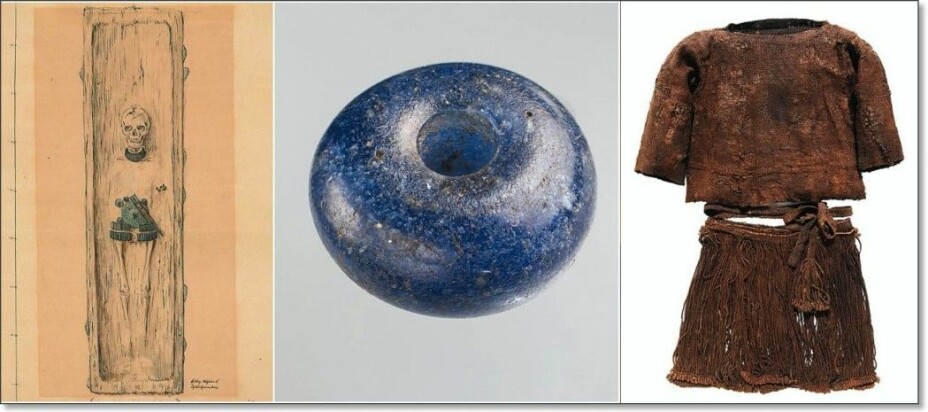
Wool from Italy to Norway?
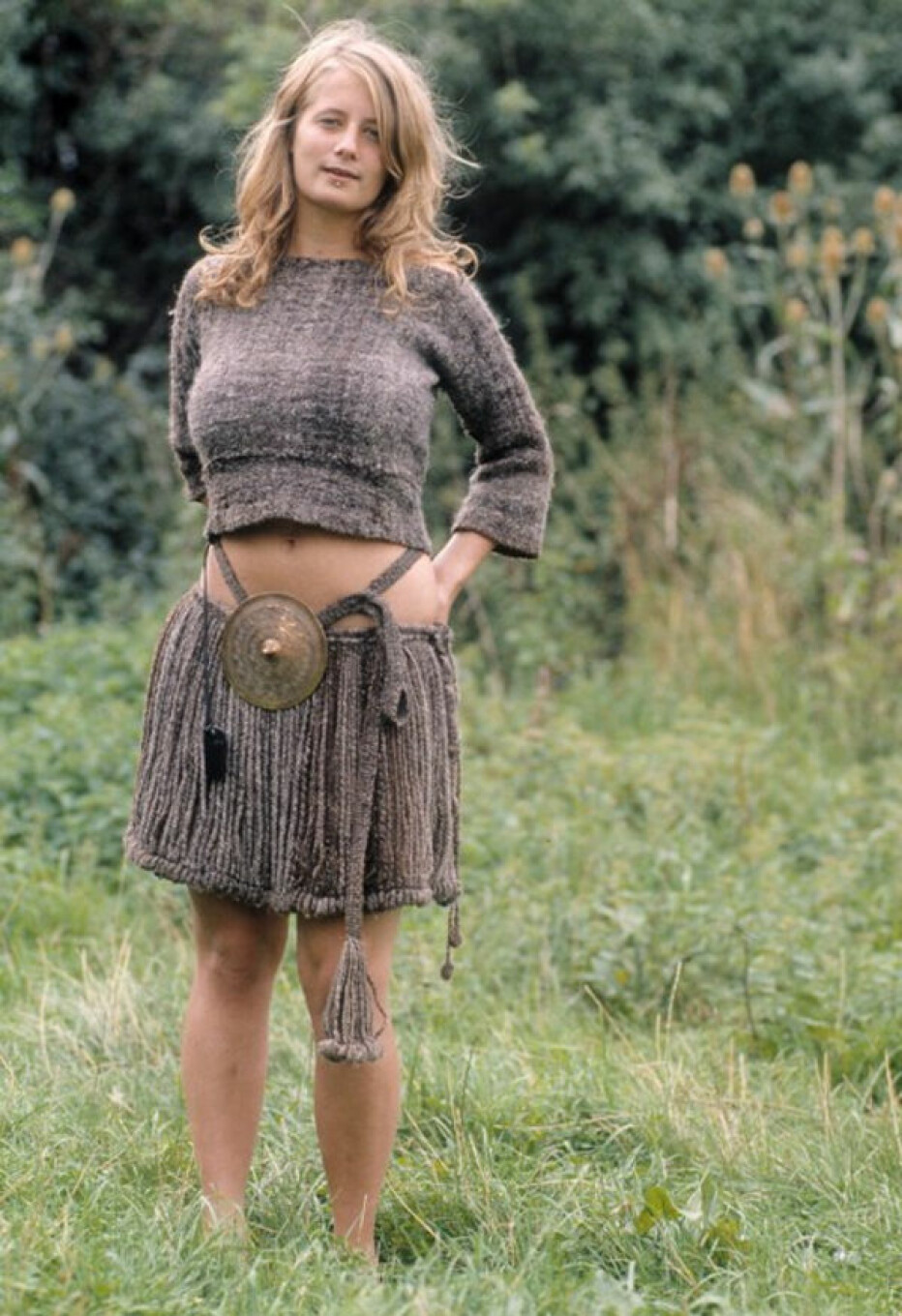
Lene Melheim at the Museum of Cultural History in Oslo says that some of the newest research findings relate to Bronze Age textiles.
“New research shows that there was also a great amount of trade in textiles in Europe. For example, large quantities of wool were produced in the Terramare culture in Italy. Perhaps woollen textiles were imported to Scandinavia,” she said.
Melheim is aware that it’s important not to stretch the significance of the new Bronze Age research findings too far. She emphasizes that many of the new methods the researchers are using now are still under development.
“Some of the interpretations we have made today will change in the years to come, with more data and a larger basis for comparison,” she said.
The climate was warmer than today
At the beginning of the Bronze Age 3500 years ago, it was perhaps as much as 3 degrees C warmer in Norway on average than today.
It then got colder and about 1500 years ago it may have become very cold. You can read more about this in this sciencenorway.no article: The long, harsh Fimbul winter is not a myth.
Just over a thousand years ago, during the Viking Age, the climate warmed up again.
But let’s turn the clock back 3000 years in Norway. At that time there would likely have been a landscape of large oak trees along much of the coast.
If you travelled by ship into the Alta Fjord in Finnmark, you might see tall deciduous forests. Inland areas in southern Norway, such as Hedmark, Oppland and Buskerud, were also covered by large deciduous forests. Many mountains were wooded, unlike today.
As early as the end of the Stone Age, people cleared many of the forests in Norway. They continued to do so during the Bronze Age. In Western Norway, the heath landscape began to spread.
There were farms and pastures both along the coast and inland. The first summer farms appeared.
The climate was so mild that people were able to leave their animals outside all year round.

Culture imported from Europe
These days, Norway could be perceived as a country on the fringes of Europe.
But 3000 years ago, the people who lived in Norway hardly felt like they were living in a backwater. Norwegians at that time were well aware of cultural developments in Europe.
Findings from the Bronze Age tell us that people in Norway were aware of trends from elsewhere at the same time as people farther south in Scandinavia.
The merchant ships that travelled south from present-day Norway around 3000 years ago may have contained a lot of leather.
We know that Danes at that time exported a lot of expensive amber south to Europe. Archaeologists have found amber jewellery from the Baltic Sea in Egyptian tombs from the time of the Pharaohs.
The skins, which may have been sent from Norway and south, have long since rotted.
Bronze could be recycled
Archaeologists don’t know which culture was the first to make bronze.
It may have been the people of Syria in the Middle East. Or it may have been people living in today's Czech Republic (the Unetice culture), Spain (the El Argar culture) or in the UK (the Wessex culture).
Or perhaps bronze was invented in several places, independently. Maybe there were a number of different people who discovered that a mixture of copper and tin resulted in a whole new metal that was much better to use than pure copper.
After all, the bronze could be shaped in ways that were previously unthinkable.
It was also important that the bronze could be used again and again, so that if something broke, it could be recycled. Because the bronze was so often reused, there are rarely large amounts of it to be found in the settlements that archaeologists excavate. Sometimes there are large bronze finds in graves or when someone has died by accident in wetlands, lakes or on scree slopes.
When bronze was first invented and put to use, it was highly sought after.
Demand for copper and tin in Europe was far greater than the supply. Tin was probably the scarcest.

Copper from Italy to Norway
No one has been able to show that copper or tin was mined in the Nordic countries during the Bronze Age.
But perhaps it just hasn't been studied enough? There is copper in Norway, in Røros, Karmøy and elsewhere. There is some tin in Telemark.
Until a few years ago, Bronze Age researchers had decided that the copper in swords and jewellery found in Norway came from mines in Central Europe. Their opinion was based on something that could be easily seen: There were great similarities between Norwegian and Central European Bronze Age swords.
“Some bronze certainly came from what we today call the Czech Republic and Slovakia. But now we know that a lot of the copper in Scandinavia actually came from a mine in Wales (UK),” Melheim says.
"Much may also have come from Italy," Melheim says, and describes a study of almost 100 Danish bronze finds where she and her co-authors concluded that 40 per cent of the copper in the finds came from copper mines in South Tyrol in today's Italy.
Ling published a study in Sweden last year of a total of 118 Bronze Age swords from Scandinavia. The study also concludes that as early as 3500 years ago, a copper mine in Italy was the most important source of swords cast both in Italy and here in Scandinavia.
Scientists are more uncertain about the tin found in Norwegian bronze. But here the UK stands out as the most likely place of origin, Melheim says. She earned her doctorate on metal production in the Bronze Age.
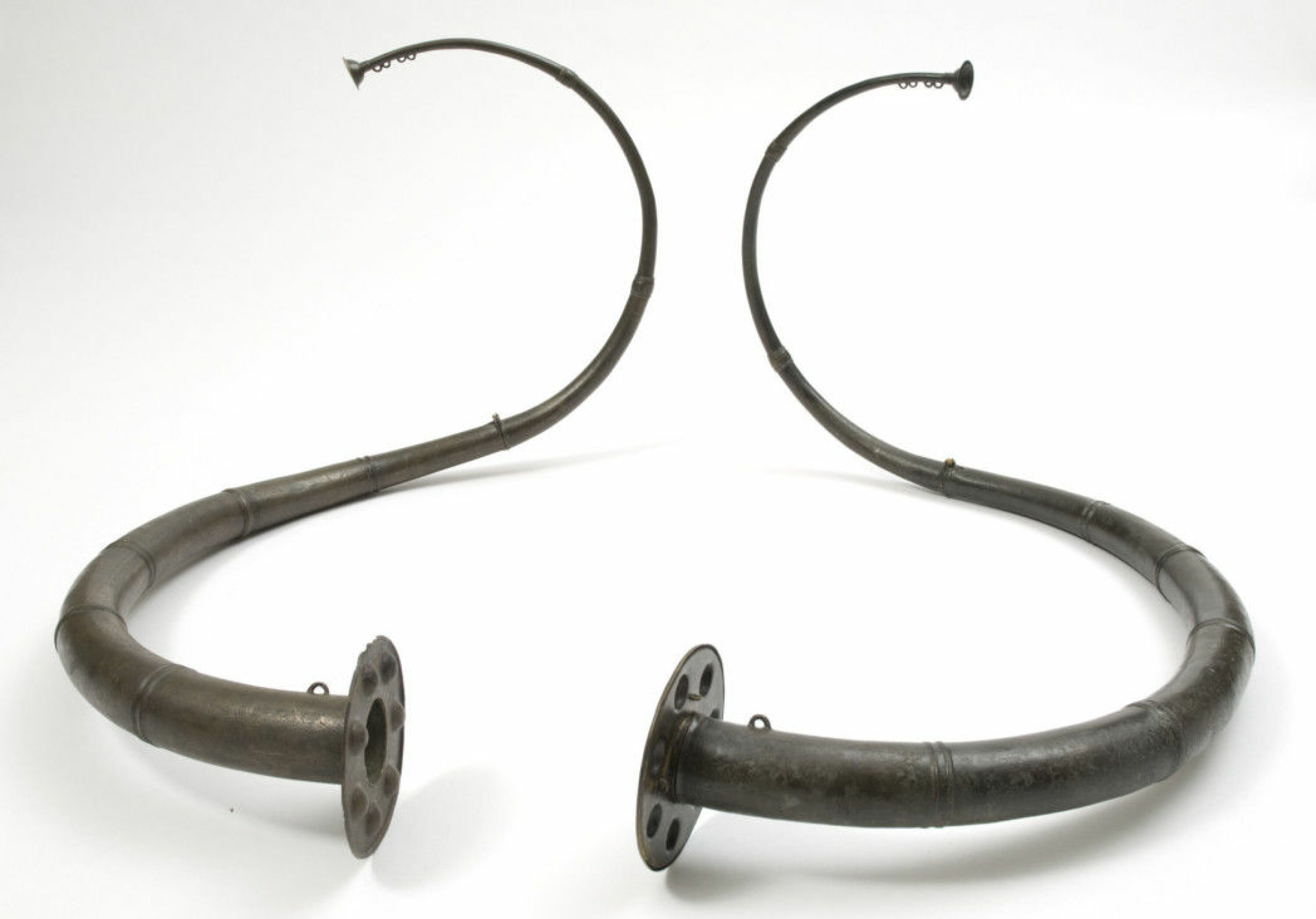
Bronze Age Society
The Bronze Age may have had a society where leaders gained greater power, much as leaders did during the Viking Age.
These people controlled both building projects and trade. They may also have been religious leaders.
Agriculture allowed more people to have access to food than was possible in the Stone Age. This allowed more people to work.
But someone needed to organize everything. And leaders needed something to show that they were in charge. As a result, they probably acquired prestigious weapons, clothing and jewellery that signified power. This increased the demand for both bronze and textiles.
Archaeological finds that have been made in recent decades show that there was a metal culture throughout Norway in the Bronze Age — from the Varanger Fjord in Finnmark to the north, to Kråkerøy in Østfold to the south, and from Sunnmøre in the west to Hedmark in the east.
From stone smiths to bronze casters
As the metal culture spread, the Stone Age's skilled Norwegian stone smiths had to find something else to do.
Some probably became bronze casters. And eventually the casters here in the Nordic countries became just as capable and often even better than their continental teachers. They produced jewellery and ornamented daggers in bronze that are equal to anything made further south in Europe.
The fashion and motifs in jewellery and weapons were the same in Norway as in the rest of southern Scandinavia and in northern Germany. This tells us that people belonged to the same culture, even though they lived far apart.
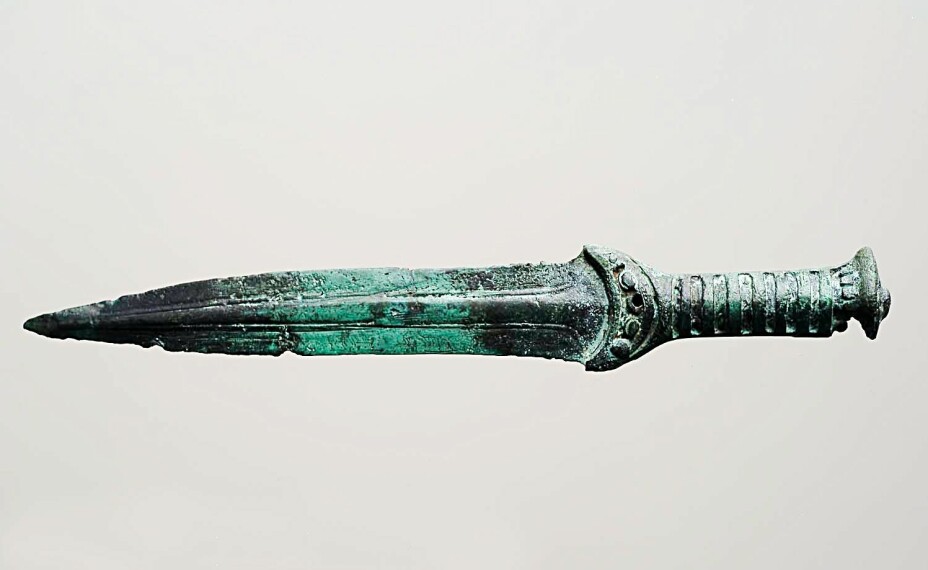
What happened after the Bronze Age?
As the Bronze Age drew to a close, the climate in Norway became colder. It may have changed a lot.
An equally dramatic change was the arrival of iron.
This innovation came to Norway about 600 years BC. Iron meant that people no longer needed to have the same kind of contact they once had with the world at large.
Iron ore was easily accessible from Norwegian bogs. All that was needed was to dig the ore up and process it, then you or your blacksmith could make iron weapons, iron tools and iron jewellery.
Iron was certainly a step forward for people. But iron probably weakened the contact Bronze Age people in Norway had with Europe.
At the same time it got colder here in the north.
The climate had gradually changed during the Bronze Age. The colder weather made life more difficult for people and animals, and it was more difficult to cultivate arable land.
Barns had to be built so that animals could shelter during the winter. Evergreen trees like spruces began to take over the deciduous forest.
And archaeologists have found that more precious objects were sacrificed to the gods as the Bronze Age drew to a close.

Translated by Nancy Bazilchuk
References:
Øystein Kock Johansen: «Bronse og makt» (Bronze and power), Andresen & Butenschøn, 2000.
Helle Vandkilde: «Bronzization: The Bronze Age as pre-Modern Globalization», Praehistorische Zeitschrift, 2016. DOI 10.1515/pz-2016-0005
Johan Ling et al: «Rock Art, Secret Societies, Long-Distance Exchange, and Warfare in Bronze Age Scandinavia», Prehistoric Warfare and Violence, 2018. https://doi.org/10.1007/978-3-319-78828-9_8 Summary
Johan Ling m.fl: «Moving metals IV: Swords, metal sources and trade networks in Bronze Age Europe», Journal of Archaeological Science, 2019. https://doi.org/10.1016/j.jasrep.2019.05.002
Store Norske Leksikon article on petroglyphs.
Stephen Wickler: «Early Boats in Scandinavia: New Evidence from Early Iron Age Bog Finds in Arctic Norway», Journal of Maritime Archaeology, 2019. DOI: 10.1007/s11457-019-09232-1 Summary
———
Read the Norwegian version of this article at forskning.no








